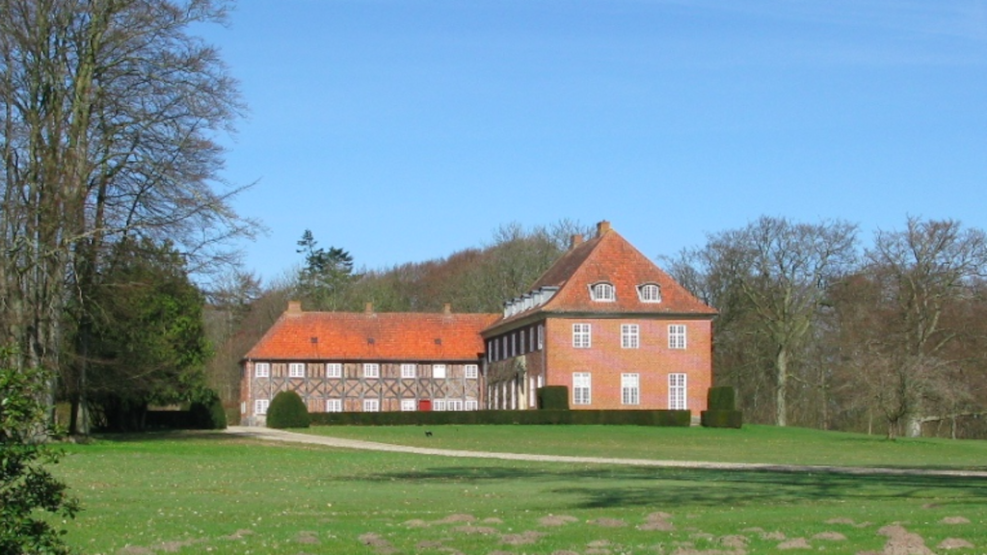
Barritskov Manor
This manor on the Juelsminde Peninsula has an exciting history, dating all the way back to the 13th century. The main farm is privately owned and therefore not accessible to the public. However, it is possible to get a good view of the building from a public road close by.
A manor near Juelsminde
Barritskov has a rather long history. Noone knows exactly when the manor was established. The oldest information available about Barritskov is that the manor was owned by a knight named Sir Niels in 1261. Sir Niels also owned land in Horsens, in which he donated land for the construction of a Franciscan monastery (the present Horsens Monastery Church). The otherwise wealthy Sir Niels chose, quite unusually, to move into the monastery, living his life as a mendicant monk.
The current main building was constructed as recently as 1916. The ruins of the earlier castle from the 1500s are now placed in the park, surrounding the manor.
A distinct detail about Barritskov is that ownership of the estate was passed on through generations from 1356 to 1913, never being sold to members outside the family. Staying more than 550 years in the same family is quite remarkable.
The landlord's rights
Barritskov was a "hovedgård" (roughly translates to “main farm”), which meant that the property was divided into the land of the main farm, owned and operated by the estate owner, and the tenant land, which was rented out to farmers and cottagers. Barritskov owned most of Barrit Parish and had tenant farms in the surrounding parishes.
The estate owner of Barritskov had different rights. He was tax-exempt, could impose penalties on his farmers if they broke the rules, had hunting and fishing rights to all corners of the land, the right of amenity, etc. However, the estate owner also had various obligations. For example, he had to collect taxes from the tenant farmers on behalf of the king, and tithes for the church, which he himself owned. He also had to recruit soldiers and employ legally trained staff to handle the inheritance matters of deceased farmers and cottagers, etc.
In the 1700s, the serfdom was abolished, and tenant farmers were allowed to buy their land. From the 1800s, it was no longer legal to impose labour obligations on tenant farmers, which necessitated hired labour.
The main building and surroundings
Barritskov is located at the end of the oblong town of Barrit, approximately four kilometres west of Juelsminde, and one kilometre north of Vejle Fjord. The main building from 1914 is situated on a little hill by a small lake, surrounded by forest. It is built in an L-shaped structure, a farm with two wings, and is made up of red bricks with beautiful, black half-timbered walls on one wing. Parts of the previous building were reused in the construction of the new Barritskov—especially indoors, where Renaissance ceilings, doors, beams, and panels were reused.
The main building is situated in a four-hectare, French-inspired garden, where a gardener's house and a farm building are also located.
Today, the estate is a total of 876 hectares with partial forestry and agriculture.
Closed to the public
Barritskov can be experienced from a distance, on the road of Barritskovvej, but as the manor is privately owned, you are not permitted to enter the garden.
Last updated on September 9, 2025 by Casper Terkelsen